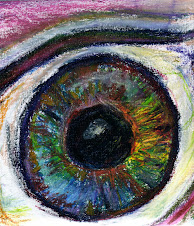Saturday, October 17, 2009
Learn to Be the Boss of Your Own Eyes
A first grader came to his 15th in-office session of vision therapy today. His parents brought him to the developmental optometrist in the first place because they noticed one eye shifting in whenever he got tired. They feared he would be teased for having crossed eyes and wanted to try to avoid surgery. Not only did the doctor concur that he has a strabismus- an eye turn, she discovered that he did not use both eyes as a team. Like many other children, he suppressed the vision in one eye to avoid seeing two images when his eyes were not aligned at the same time on the same visual image in space. This unconscious strategy made him unaware of any visual problem. He had good grades, was a good athlete, and had no intrinsic use for coming to see me every week. It has taken all sorts of monocular, and binocular activities disguised as games to coax him to begin to experience binocularity. Last week it started to make sense TO HIM. I asked him to watch a bead approaching his nose on a long string (the Brock String - magic to many patients but key to learning to use two eyes together). Whenever the bead got within about six inches of his nose, his left eye swooped in towards his nose and he reported seeing two balls. Had his eyes continued to be teamed on the in-coming bead it would have remained single. Finally he was able to connect the feeling of that eye moving in with the sensation of double vision. "You need to be the boss of your own eye," I suggested, "but it keeps saying: 'I don't have to obey you - I can do anything I want.'" That apparently was enough motivation to make the child take charge. Today I could push the bead within two inches of his nose without the eye wigging out and he could switch between that bead and another bead about eight feet away on the same string without any problems at all except that it made him very tired. By next week he should be able to do more repetitions without fatiguing. As long as he is the boss of his own eyes, he will make them mind. Of course, this activity correlates with the ability to read for extended periods of time without fatigue, double vision, headaches, or the words wiggling on the page. It also solves the cosmetic problem that his parents were so (justifiably) worried about. I can't wait for his re-evaluation appointment with the doctor who will be thrilled at the emerging binocularity and independent control of his eye movements both when using one eye and two.
Subscribe to:
Post Comments (Atom)





No comments:
Post a Comment